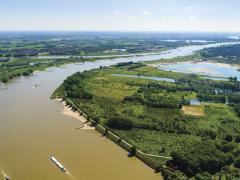What drives the ecological quality of surface waters? A review of 11 predictive modeling tools
What policy is needed to ensure that good-quality water is available for both people’s needs and the environ-ment? The EU Water Framework Directive (WFD), which came into force in 2000, established a framework for the assessment, management, protection and improvement of the status of water bodies across the European Union. However, recent reviews show that the ecological status of the majority of surface waters in the EU does not meet the requirement of good status. Thus, it is an important question what measures water management authorities should take to improve the ecological status of their water bodies.
To find concrete answers, several institutes in the Netherlands cooperated to develop a software tool, the WFD Explorer, to assist water managers in selecting efficient measures. This article deals with the development of prediction tools that allow one to calculate the effect of restoration and mitigation measures on the biological quality, expressed in terms of Ecological Quality Ratios (EQRs). To find the ideal modeling tool we give a review of 11 predictive models: 10 models from the field of Machine Learning and, additionally, the Multiple Regression model. We present our results in terms of a ‘prediction- interpretation competition’. All these models were tested in a multiple-stressor setting: the values of 15 stressors (or steering factors) are available to predict the EQR values of four biological quality elements (phytoplankton, other aquatic flora, benthic invertebrates and fish). Analyses are based on 29 data sets from various water clusters (streams, ditches, lakes, channels). All 11 models were ranked by their predictive performance and their level of model transparency. Our review shows a trade-off between these two aspects. Models that have the best EQR prediction performance show non-transparent model structures. These are Random Forest and Boosting. However, models with low prediction accuracies show transparent response relationships between EQRs on the one hand and individual steering factors on the other hand. These models are Multiple Regression, Regression Trees and Product Unit Neural Networks. To acknowledge both aspects of model quality – predictive power and transparency – we recommend that models from both groups are implemented in the WFD Explorer software.
Authors
Specifications
- Publication title
- What drives the ecological quality of surface waters? A review of 11 predictive modeling tools
- Publication date
- 17 November 2021
- Publication type
- Article
- Page count
- 10
- Publication language
- English
- Magazine
- Water Research
- Issue
- Volume 208, 1 January 2022, 117851
- Product number
- 4867




